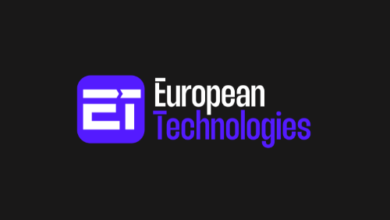A recruiter’s secret weapon in a hectic hiring market: Artificial intelligence

For those in the business of
As the hiring process has evolved, recruiters and hiring managers are
The time saved is paying off: Zippia research shows that 67% of recruiters feel AI has improved the recruiting process and 96% of HR leaders say it will greatly enhance talent acquisition and retention.
“The biggest part of the recruiting process is the time you have with a candidate,” says Alex Salas, associate vice president of HR at Federal Farm Credit Banks Funding Corporation. “AI has made screening resumes a lot easier and is capable of candidate matching and skills identification.”
Read more:
Salas says he utilizes three different recruiting platforms when looking for talent. LinkedIn, for example, allows him to see a skills comparison between an applicant and a job posting, cutting out the time it would take him to find this information out by parsing a resume or cover letter. Once Salas feels there’s a fit, he can move forward with an interview.
The ability to quickly gauge someone’s skills is becoming essential, as more companies prioritize skills-based hiring methods, which rely on evidence of abilities, rather than experience or education. A recent TestGorilla report found that companies using this approach have reduced mis-hires by 88%, improved diversity by the same amount, and have seen an 89% increase in retention.
Whereas the old employer mindset was to hire and then replace someone if they turned out to be a bad fit, the focus now is on ensuring a candidate has the right skills for the job before they are hired. Ideally, AI can make this process easier, clearing the way for more personal connection.
“AI tools, in theory, should give recruiters time back to explore what candidates’ strengths and motivations are, and what they want to do,” says Andrew Nelesen, global solutions director of volume hiring at corporate talent platform SHL. “At the highest level, it is about driving growth and productivity, but it’s also about just getting the most out of people. If recruiters have more time to dig a bit deeper with a smaller population of good candidates, that is a win for both parties.”
Read more:
SHL uses AI-powered pre-employment assessments to help determine whether a candidate is a match for a specific position. They not only narrow down applicants by skill, but increase the likelihood of bringing more diverse applicants through the process — unbiased feedback is provided based only on someone’s capabilities, not background, says Nelesen.
“If the goal is to hire for skills, not experience, we want to expand talent pools and embrace different backgrounds,” he says. “Assessments treat everyone fairly by illuminating what people are best at rather than just inferring based on what they’ve done before. Younger talent pools really appreciate the value of having the opportunity to demonstrate their job-related skills and strengths.”
Read more:
By using tools that increase the chance of making long-term hires, employers gain the advantage of building a workforce capable of moving internally to various projects, teams and roles across the organization. Employees will also benefit from different experiences and career growth opportunities without having to change jobs.
“We’re gravitating toward hiring for potential rather than narrow role requirements,” says Nelesen. “We’re trying to instill in our people that they can grow within our organization, and the hypothesis is that they will repay that growth with loyalty and productivity.”



